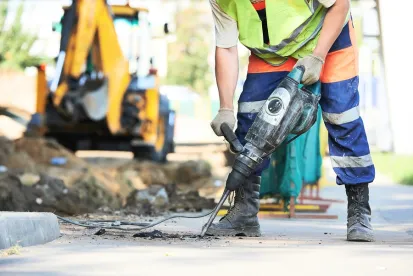The American Land Title Association (ALTA) and National Society of Professional Surveyors (NSPS) have announced changes to the standards for the minimum standard detail requirements for land title surveys of real property. The changes take effect on February 23, 2016 and will replace the requirements that took effect in 2011.
Many of the changes are ministerial in nature and will not substantively affect the content of most ALTA surveys. These less-important modifications include changes to remove references to the American Congress of Surveying and Mapping (ACSM), a predecessor to the NSPS. However, property owners, lenders, and other parties who consider the importance of the following changes to the minimum standards (references below relate to the Standards):
-
Records Research (Section 4): A surveyor’s responsibility to perform research is now expressly limited to only the research required to satisfy local statutory or administrative requirements of the jurisdiction where the property is located, or as negotiated in the contract between the surveyor and the client. Section 4 also lists documents that the surveyor must be provided by the client in order to complete the survey. Comment: These limitations may require updates to your checklists of survey requirements to assure that the survey includes all of the information that you need. It also emphasizes the need to provide the surveyor with appropriate background information, rather than relying on the surveyor to find it.
-
Field Work Precision (Section 5 and 6): Unless otherwise specified, the surveyor may use his or her professional judgment to determine the appropriate degree of precision for location of various features on the property. Please note that Section 3(E) of the Standards still delineates measurement standards of precision for the measurements depicted. Comment: This modification will not typically impact your survey, but may be important in cases where precise delineation of a property feature is needed.
-
Utility Features (Section 5(E)(iv)): Surveyors now must show observed utility features on the property. This was optional under the previous requirements. Comment: This change is beneficial for most of our clients, as this information is useful for development planning and anticipating property usage.
-
Explanation of New Legal Description (Section 6(B)(ii)): If the surveyor prepares a new legal description, he or she must explain why it was prepared, and how the land described in the new description relates to the land described in the record description. Comment: While this was often included, the requirement to provide written explanations is helpful, particularly in circumstances where the party ordering the survey did not request a new legal description.
-
Clarification of Presentation Details (Section 6(D)(ii)): This change clarifies that certain minimum content requirements, including depiction of a North bearing arrow, a legend of symbols and abbreviations, etc., are mandatory. Comment: Most surveyors already include these details, or clients would specify them. These modifications help clarify the interpretation of the survey.
-
Adjoining Property Holders (Section 6(B)(vii)): Reflecting adjoining property holders’ names is now an optional Table A specification (Item 13), rather than a standard requirement. Comment: In most cases, this information is helpful to know, and we expect that many of our clients will make a change to their survey requirements to include this Table A option.
-
Zoning Information (Table A, Item 6): This change requires that the surveyor be provided a zoning letter or zoning report if the zoning information is to be reflected on the survey. Comment: With the increased use of zoning reports and availability of municipal zoning letters, it makes sense that surveyors want to avoid primary responsibility for this information, which is not really within their area of expertise.
-
Evidence of Use as a Solid Waste Dump, Sump, or Sanitary Landfill – Former Table A, Item 18, referring to the use of the subject property as a solid waste dump, sump or sanitary landfill is eliminated. Table A, Item 8 has been amended to include the optional request that the survey show any “substantial areas of refuse.” Comment: As with the change to zoning standards noted above, it makes sense that surveyors wish to have clients rely on environmental consultants or similar expertise, given the increased availability of and use of environmental reports.
-
Wetlands (Table A, formerly Item 19, now Item 18) – If specified in Table A, the surveyor will locate any delineation markers observed on the property as located by a qualified specialist, but otherwise has no obligations to locate wetlands. The former standard required that the surveyor locate wetland areas as delineated by an appropriate authority, arguably implying an obligation of research of certain environmental agency records, rather than mere location of staked areas. Comment: Wetlands and possible wetlands continue to be a challenging issue for land use and development. While this change is probably appropriate because it shifts responsibility from surveyors to other experts that work more closely with these issues, in cases where wetlands are suspected, additional diligence costs may have to be incurred.
-
Monumentation of Appurtenant Easements – Former Table A, Item 20b: This item has been removed. Item 20b’s removal eliminates the need to locate monuments on the property upon which the appurtenant easements are located. Comment: This change does not eliminate the need to depict appurtenant easements, only the need to monument them, meaning that in the vast majority of cases, this is a relatively minor change.




 />i
/>i

